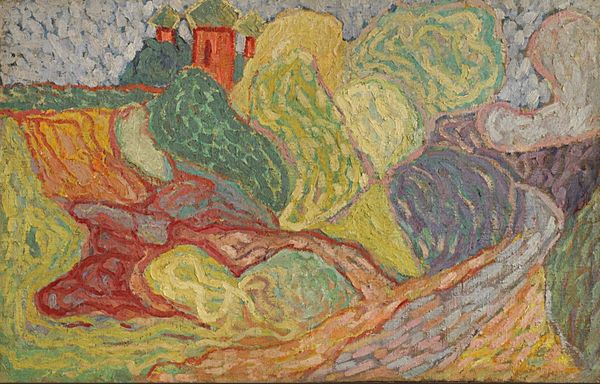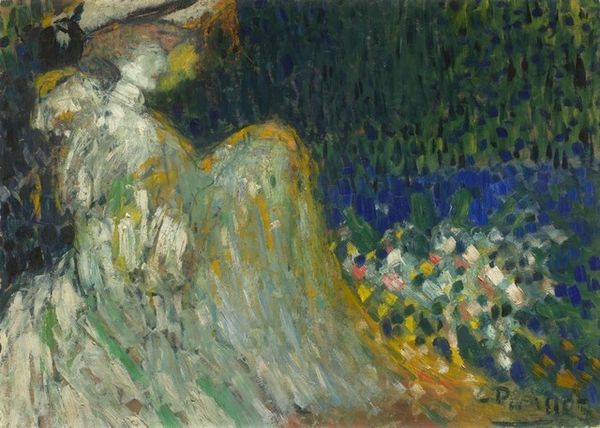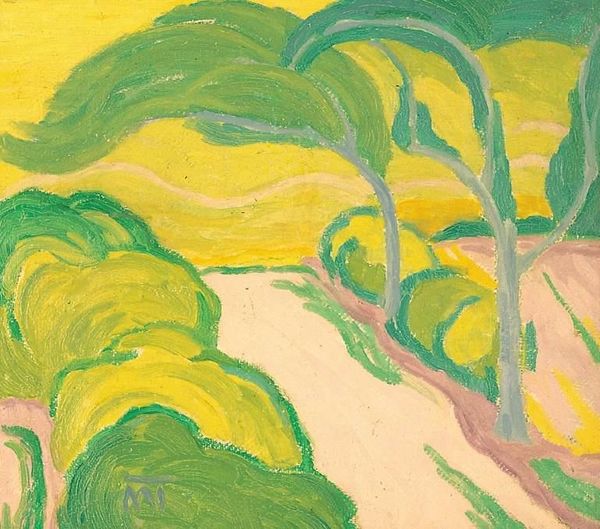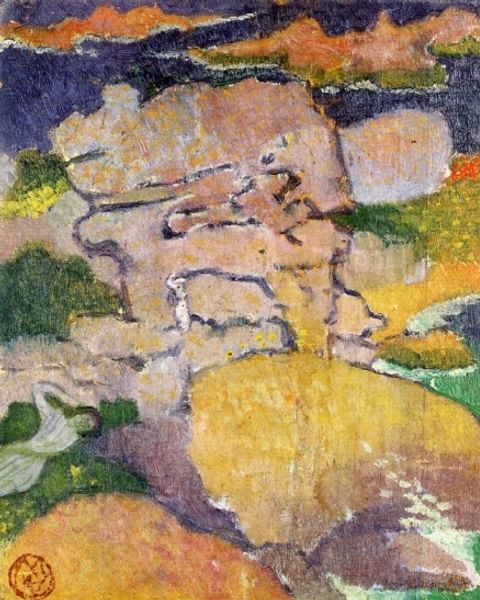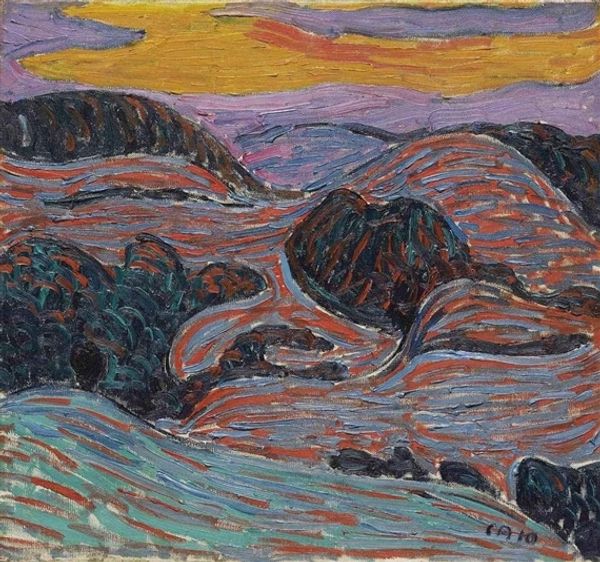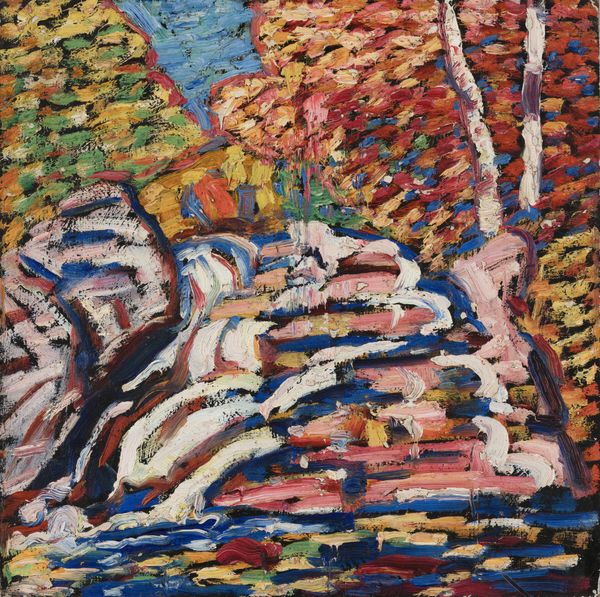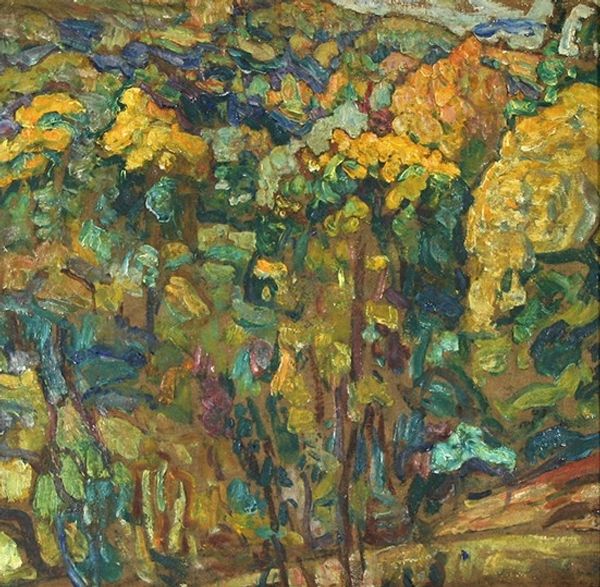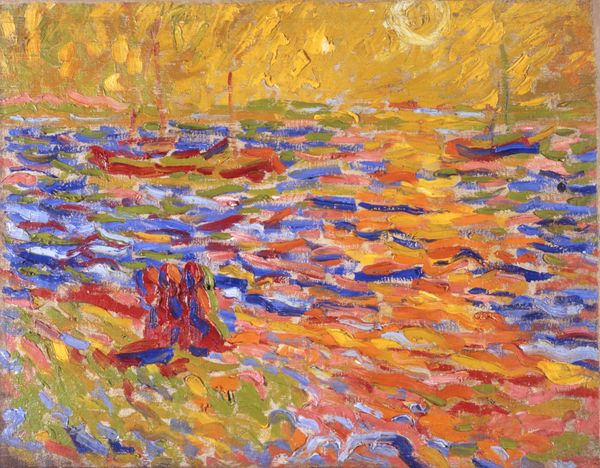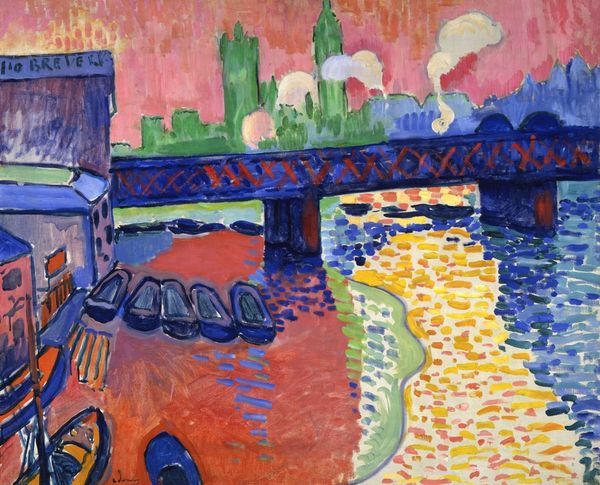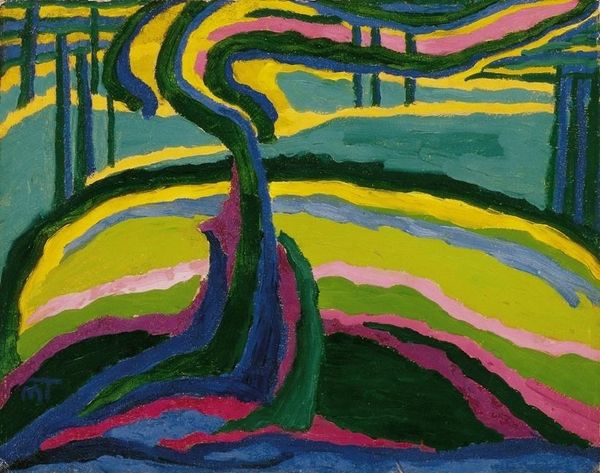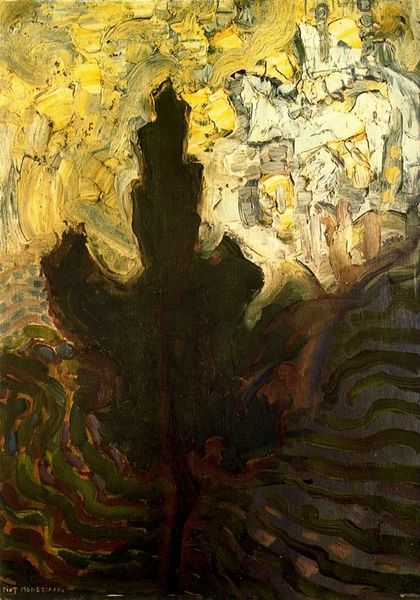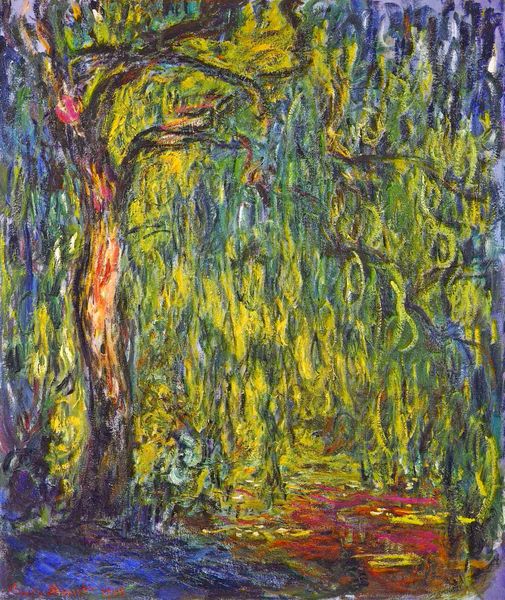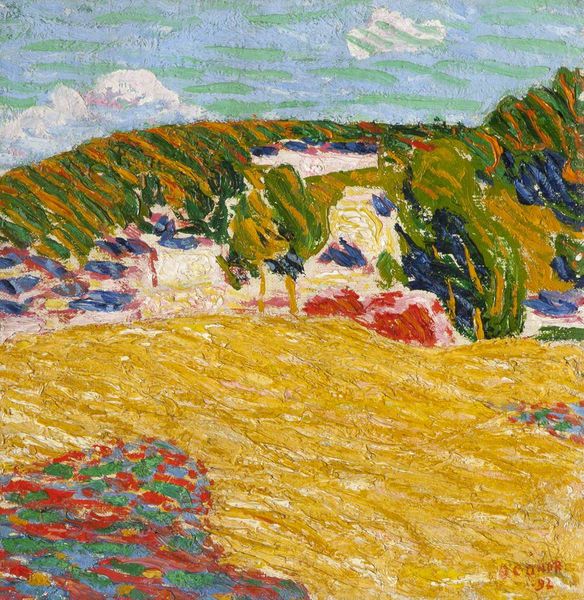
oil-paint
#
oil-paint
#
landscape
#
german-expressionism
#
expressionism
#
cityscape
#
modernism
#
expressionist
Copyright: Public domain US
Editor: We're looking at Max Pechstein's "Bridge over the Seine with small steamer," painted in 1908. It’s oil on canvas. I find the colors so unusual, not the realistic tones one might expect of the Seine. What strikes you about it? Curator: I’m immediately drawn to its vibrant yet unsettling energy. This is early German Expressionism. Consider the context: Germany rapidly industrializing, anxieties about modern life growing, traditional hierarchies crumbling. Pechstein isn't just painting a cityscape, he's expressing a felt experience of modernity – the raw, almost violent energy of the changing world. The bold colors, the almost frenzied brushstrokes... does this imagery of industry convey the true impact that factories had on citizens' lives? Editor: That’s interesting. I was focused on the bright colors, but thinking about it now, the steam from the boat seems almost menacing rather than picturesque. Is that intentional, do you think? Curator: Absolutely. The smoke billowing from the steamer, rendered in those unnatural blues and pinks, becomes a symbol. It’s not just smoke, but also a metaphor for the pollution, both literal and metaphorical, that industrialization brought. Think about the socio-economic divisions widening at this time; consider who benefited from this rapid development and at whose expense. It provokes important questions. Who is represented in the canvas? Who is absent? Editor: So the painting isn’t just a pretty scene; it's making a statement. The intense style also becomes its own statement. Curator: Precisely. By distorting reality, Pechstein calls attention to the hidden, often unpleasant, realities lurking beneath the surface of modern life. We should really contemplate what Pechstein truly wanted to capture. Editor: I never thought about it that way. I see so much more in it now, thinking about it as a critical response. Curator: And that's the power of art, isn't it? To provoke, to question, to offer alternative ways of seeing our world.
Comments
No comments
Be the first to comment and join the conversation on the ultimate creative platform.
